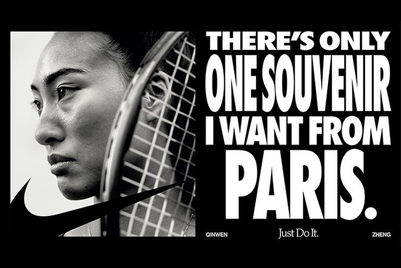
Terry Rhoads, managing director of Zou Marketing, which focuses on sports marketing in China, said the exposure the sports brand experienced throughout the Games - it was not an official sponsor but had deals in place with athletes and teams - had seen it surpass US$1billion in sales, a first for Chinese sports brands. Rhoads argued that Li Ning had become “a formidable challenger to Nike and adidas for leadership in the China market”.
Li Ning’s Singapore store, the first of a planned 70 to 100 overseas outlets, focuses on badminton equipment and its maintenance. Li Ning also unveiled a sponsorship deal to clothe Singapore’s national badminton team.
According to Rhoads, by focusing on badminton and table tennis, two sports dominated by Asian nations, the Chinese sports brand can expand into overseas markets such as Southeast Asia before tackling Europe and North America.
Michael Wood, CEO of Leo Burnett Greater China, which holds Li Ning’s creative account, said that Li Ning had mapped out its plans for expansion. “Li Ning has already started to go global. It’s already started to expand into emerging markets. I think the strategy is very much to look for markets with similar characteristics, whether that be geographically, operationally - in terms of distribution channels - economically or demographically,” he said in an interview with MediaTV, part of a series of interviews with leading figures from the sportswear industry on the impact of the Olympics.
Hass Aminian, business development director of Sportsfive Singapore, argued that Li Ning’s public success opened doors for the expansion of Chinese brands such as Anta because “Chinese brands benefit from each other’s success when reaching overseas markets, as their credibility rises, ‘shoulder on shoulder”.
But the Olympic effect has not just touched domestic sports brands. Christophe Bezu, SVP and regional head of adidas, told MediaTV that China is now the second-biggest market for the brand following the Games, of which it was an official sponsor. Bezu said that in the past year adidas had built on the platform through a focus on basketball and digital activity.
Since the end of the Olympics, adidas has shifted strategy in China. According to sources close to the brand its media spend has fallen dramatically in the past year. Bezu said that its focus had shifted away from big ad campaigns toward in-store and CRM.
According to Celine del Genes, head of marketing Asia-Pacific at Reebok, the Olympics have brought consumers closer to sporting events and allowed brands to “communicate on a platform” that wasn’t previously available. “It’s been a changing of the game since the Games,” she added.
One example is growing interest in sport among women. Reebok has adopted a niche position that targets women, not just in China but across Asia and in particular India, where it is the number one athletic brand. Its female focus includes products that help women keep fit.
The pressure to keep up with the growing competition in the region has produced a range of marketing strategies. Puma has strengthened its positioning as a sports-lifestyle brand, with a basis in athletics and fashion, in Greater China and Korea.
“Compared to the others we’re quite small but there is a big opportunity at the moment for us to create the same brand as we have the rest of the world in Asia,” Christoph Peter-Isenbuerger, head of marketing for Puma Asia-Pacific, told MediaTV.
Click here to see the full MediaTV interview series.


.jpg&h=334&w=500&q=100&v=20250320&c=1)

.jpg&h=334&w=500&q=100&v=20250320&c=1)


.jpeg&h=334&w=500&q=100&v=20250320&c=1)
+(1).jpg&h=334&w=500&q=100&v=20250320&c=1)

.jpg&h=334&w=500&q=100&v=20250320&c=1)
.jpg&h=334&w=500&q=100&v=20250320&c=1)







